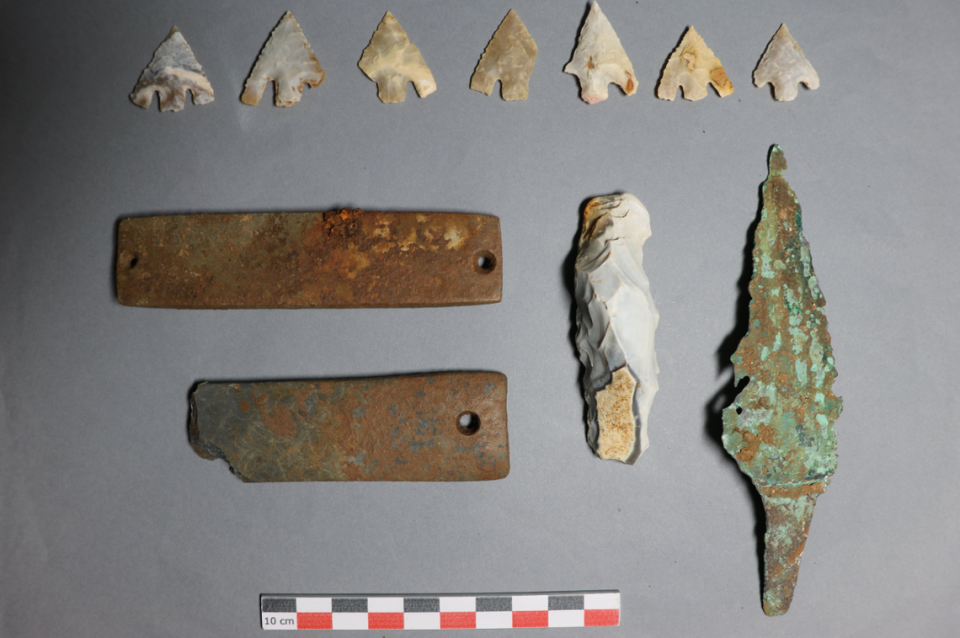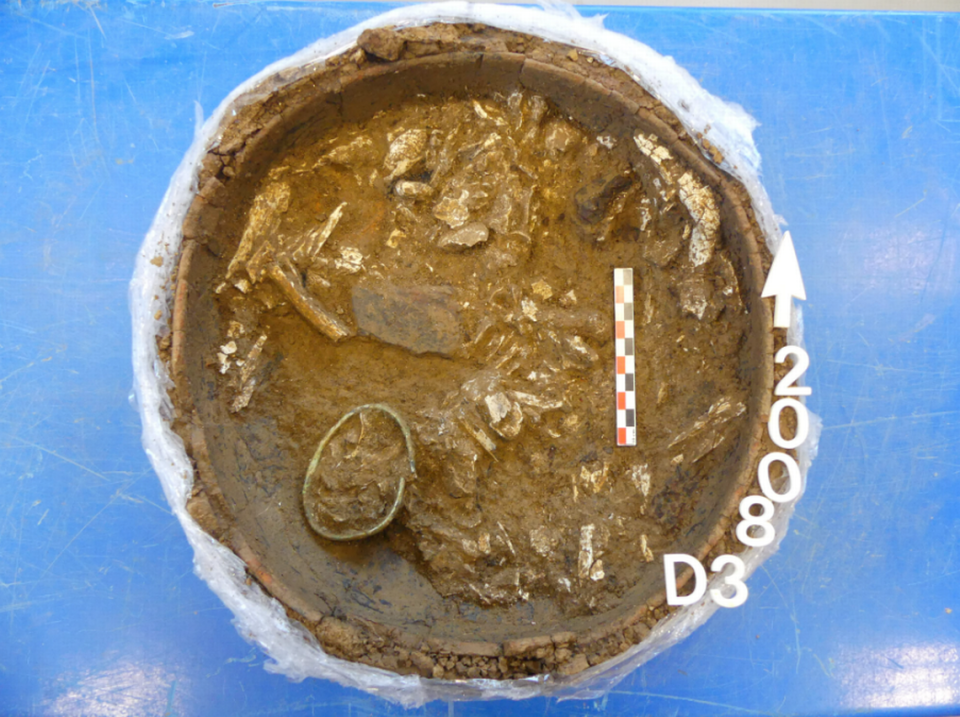Strange horseshoe-shaped monument discovered in France — leaving experts puzzled
Archaeologists in France recently unearthed an unusual, horseshoe-shaped monument alongside a trove of artifacts from various historical periods.
The discoveries were made during excavations in Merliens, a commune located about 200 miles southeast of Paris, according to an April 5 news release from the French National Institute for Preventive Archaeological Research (INRAP).
The excavations, which concluded in February, revealed evidence of occupation by people spanning from the Neolithic era to the Iron Age.
Uncover more archaeological finds
What are we learning about the past? Here are three of our most eye-catching archaeology stories from the past week.
→ Roman helmet looked like a 'rusty bucket' when it was found in UK. Now, it's restored
→Elaborate 600-year-old castle — complete with moat — unearthed in France. Take a look
→ Mysterious wooden train car — almost 100 years old — unearthed in Belgium, photos show
Among the more peculiar findings was a monument composed of three round enclosures, one of which resembles a horseshoe.
The structure has no known parallel, and researchers are not sure how old it is or what it might have been used for, officials said.
However, some flint artifacts were discovered nearby, indicating it might have been constructed sometime in the Neolithic period, which began around 7000 B.C. in Europe.
Nearby, numerous artifacts were discovered that were linked to the Bell Beaker period, which began roughly 4,500 years ago.
Among these were seven flint arrowheads, a pair of archer’s armbands and a copper dagger, officials said.

The combination of these objects often indicates a burial, but researchers weren’t able to verify this hypothesis.
Additionally, a gravesite with five circular enclosures — one of which was sealed — was discovered and dated to between 1500 and 1300 B.C.
The largest enclosure contained the remains of a funeral pyre, officials said. An amber bead necklace and ceramic shards were also found nearby.
Another gravesite, located about 1,300 feet away, was filled with the remains of six cremations dating to the Iron Age. Some of the urns also contained jewelry, such as bracelets or rings.
Further research will be conducted on the unearthed artifacts to gain a better understanding of their origins and purposes, according to the release.

Google Translate was used to translate a news release from INRAP.
High tide and seaweed hid 3,000-year-old fortress in Ireland — until now. See it
Several underground bunkers — left from WWII — unearthed at park in Belgium. See them
High tide and seaweed hid 3,000-year-old fortress in Ireland — until now. See it

